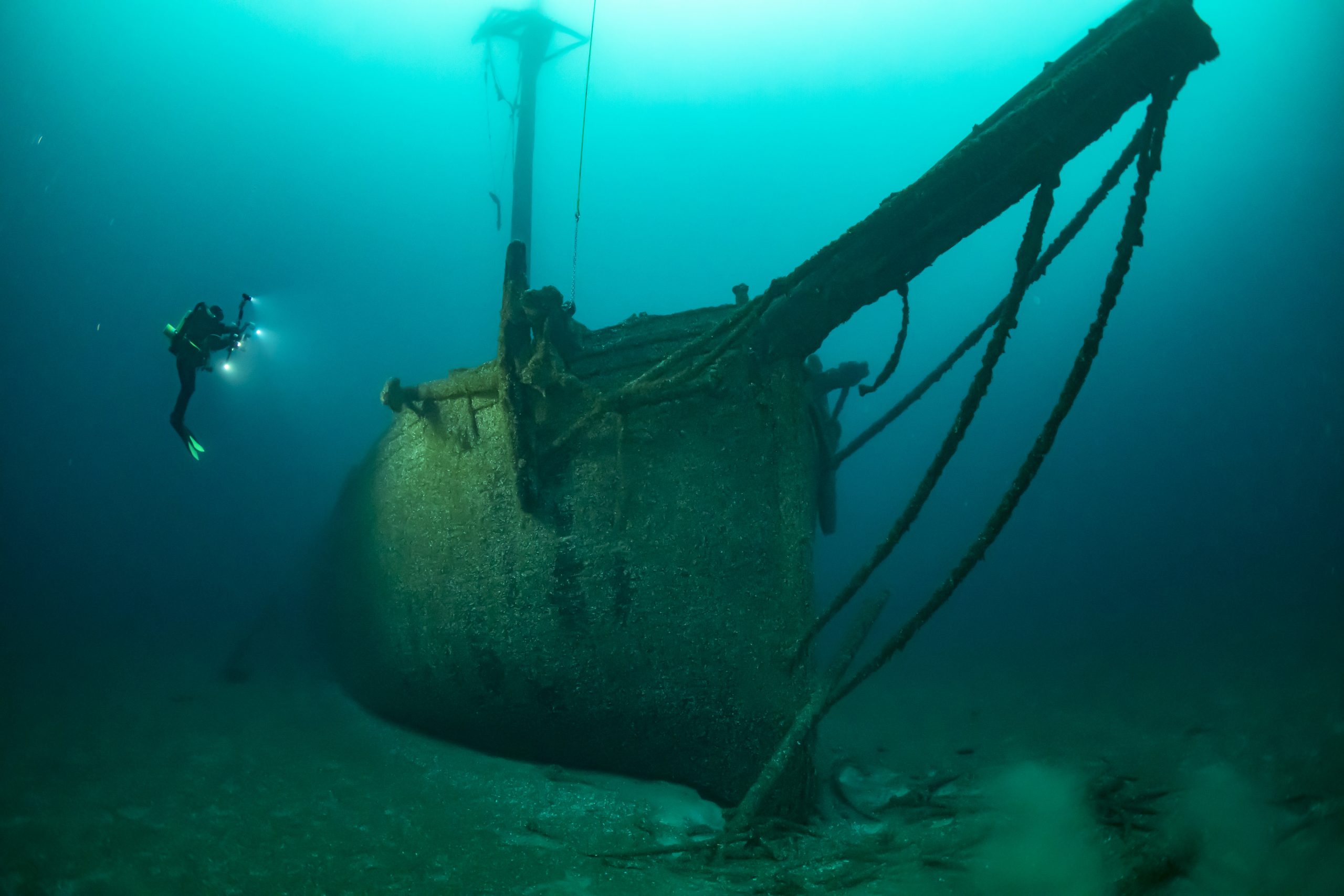Photographing over a thousand shipwrecks in the Great Lakes is a gigantic task and we hope you will join us by shooting your favorite local shipwreck site so we can “crowd-source” the data for the database. We believe you will find diving with a purpose is not only fun but also fulfilling. To help you get started take a look at our Training Menu where we have a link to an introduction to Photogrammetry. We also have compiled some guidelines for shooting underwater images of these shipwrecks. Several of the certifying organizations have photogrammetry classes and certifications including IANTD, GUE, and NAUI. Just Google “underwater photogrammetry course” for the latest list. Although results can be better, you do not have to own a high-end underwater camera to do it. We have had success with GoPros. You also don’t have to be diver. There are many shipwrecks on shore around the Great Lakes and we would like to add those to the database as well. So if you are interested in helping with the project we look forward to working with you. Since we are just starting the effort please excuse us if we don’t have all of the details for automating the process in place yet. We believe it is important to get the data collection started since our shipwrecks are deteriorating every year and the sooner we collect the data the more intact our documented shipwrecks will be. If you have images you shot in the past to do a photomosaic of a wreck site we can sometimes re-process them in a 3D mode and get a 3D model of even a relatively flat wreck site.
If you contribute your images or video you will be listed as the photographer of the model in the database which we believe will be a permanent record of our shipwrecks. We ask that you join GLSPS as a member which helps us determine we are working with real people and not internet scammers and also helps us in a small way support the program expenses. We also ask for non-exclusive rights to display, and distribute the model, model source images and shipwreck information. We believe the information will be useful to academics studying our shipwrecks, their historical significance, and their degradation over time as well as being of great interest to the public.
